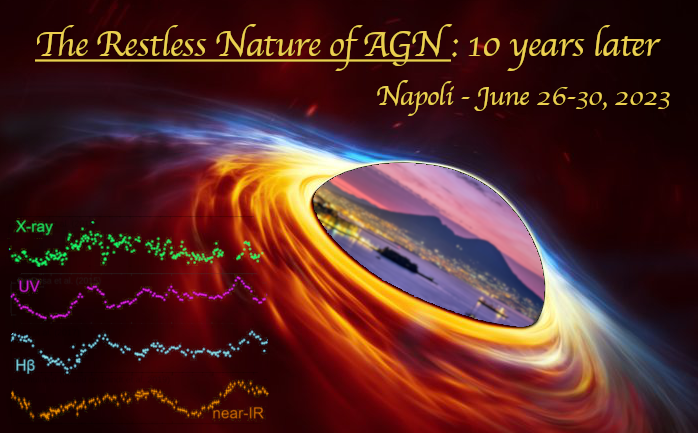Speaker
Description
Variability studies of Active Galactic Nuclei (AGNs) have proven to be a powerful diagnostic tool for understanding the physics and properties of these objects. They provide insights into the spatial and temporal distribution of the emitting regions, the structure and dynamics of the accretion disk, and the properties of the central black hole. Here, we present the results of a ten-year campaign to monitor the near-infrared emission of the Seyfert 1.9/2 nucleus of NGC4388, covering J and K band spectroscopy. During this period, the hot dust continuum of the nucleus of this object varied by up to 200% under certain wavelength ranges. However, emission lines of low and medium ionization did not change beyond our error margin, whereas we detected variations of almost 100% at the [Ca$_{\rm VIII}$] coronal line. These results suggest that between 2011 and 2013, we were able to access an unresolved nuclear region that became obscured after 2015. We also mapped continuum and emission lines beyond the nucleus and found no significant variation within this time frame. These maps also indicate that emission lines are distributed along two main directions, representing the disc and the radio jet. Furthermore, the ionization of the emission lines is compatible with photoionization by an AGN in our whole 8x8 arcsec² field of view. Lastly, we detected a strong decrease in dust reddening along the radio jet, suggesting that the AGN is destroying dust grains in this region.

